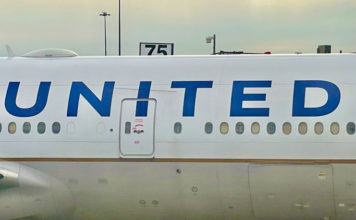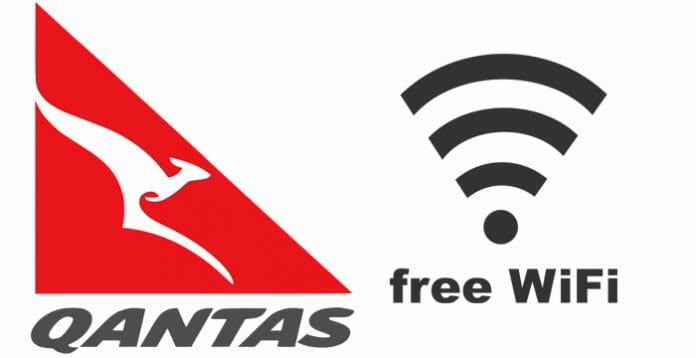
TravelingForMiles.com may receive commission from card issuers. Some or all of the card offers that appear on TravelingForMiles.com are from advertisers and may impact how and where card products appear on the site. TravelingForMiles.com does not include all card companies or all available card offers.
Qantas has announced that it intends to roll out “world-leading inflight wi-fi” from next year thanks to a partnership with global broadband services provider ViaSat that will “tap into the nbn™ network”.
The announcement from Qantas says:
The new service will feature speeds up to 10 times faster than conventional on-board wi-fi, giving customers the ability to stream movies, TV shows, the latest news bulletins and live sports on domestic flights via the internet.
In-flight trials are expected to begin with a single Qantas Boeing 737 aircraft in late 2016, retrofitted with equipment to enable high-speed wi-fi. A full roll-out across Qantas Domestic’s fleet of A330s and B737s is planned from early 2017, with the aircraft to be fitted with modems and the advanced antenna that receives the satellite signal.
Runway Girl Network explains how this wi-fi is set to work:
Qantas has selected ViaSat’s Ka-band antenna for its Boeing 737-800 and the hybrid Ku-Ka antenna — an Asia-Pacific first — for its Airbus A330-200 fleet, which flies both domestically and internationally.
The hybrid connectivity will enable these aircraft to use both the Australian National Broadband Network’s (NBN’s) Sky Muster high-capacity Ka-band satellites, which are clustered around the more highly populated eastern coast of Australia, and the additional capacity offered by Ku-band satellites on the A330s’ routes into numerous Asian hubs.
 NBN’s high-capacity satellites clustered around Eastern Australia – Image via NBN
NBN’s high-capacity satellites clustered around Eastern Australia – Image via NBN
Before any Aussie readers start getting over excited, the devil is in the detail. This new “free wi-fi” service will be limited to Australia-based Boeing 737-800 aircraft and Qantas’ A330-200 fleet…and that’s it.
Per Runway Girl Network:
ViaSat’s Don Buchman confirmed to Runway Girl Network that Qantas’ New Zealand-based 737-800 fleet will not receive the hybrid Ku-Ka antennas, which means that these aircraft will not be connected. This fleet is operated by NZ subsidiary Jetconnect on the 3-4 hour routes between Australia and NZ, outside the range of the NBN satellites.
In addition to the NZ based 737-800 missing out, it would appear that smaller aircraft (like Boeing 717’s and QantasLink Bombardier Q400 turboprops) will also not be kitted out with the new wi-fi….and these are the aircraft that operate a considerable number of flights around Australia.
Qantas claims that the wi-fi will be able to offer passengers “download speeds in the air similar to what they’re used to on the ground” and passengers “won’t be limited to checking your email or Facebook – it’s going to be about watching the football live, streaming your favourite TV show or movie, catching up on the latest YouTube videos, or shopping online.”
Trials of the new equipment are expected to begin with a single Qantas Boeing 737-800 towards the end of 2016, retrofitted with equipment to enable high-speed wi-fi.
A full roll-out across Qantas Domestic’s fleet of A330-200s and B737-800s is planned from early 2017, with the aircraft to be retrofitted with modems and the advanced antennas that receive the satellite signal.
 Qantas 737 – image courtesy of Steve Verrall via Flickr
Qantas 737 – image courtesy of Steve Verrall via Flickr
Bottom Line
I’ve never been a fan of free wi-fi because, in my experience, I’ve yet to find an inflight wi-fi connection that was acceptable when only those paying for it were online – having the whole aircraft logged on isn’t going to help.
Having said that, I’ve yet to try out this new-breed of wi-fi so perhaps I’m out of tune with current levels of wi-fi capability…but I’m going to continue having my doubts until they’re proven wrong.
The fact of the matter is that if you give a plane-load of passengers free wi-fi most (if not all) are going to use it. There’s not much to do when you’re up at 30,000ft and people’s need to be in touch with everybody and anybody 24/7 is going to kick in…..and suddenly 200 people are uploading pictures of their food/drink/seat/view to Twitter, Facebook and whatever other social network is in vogue at the time. That’s going to take up bandwidth.
Even if some passengers aren’t using the wi-fi for anything more than a couple of iMessages/text messages what’s to say their smartphones aren’t busy updating all their apps in the background now that they’ve found a wi-fi signal? That would be another big drain on bandwidth.
Add to all that the fact that Qantas is claiming that passengers will be able to stream movies and watch live TV and my levels of scepticism just rise and rise.
I sincerely hope I’m wrong and that we’re watching the birth of a whole new way of communicating while we’re up in the clouds. I’ll be one of the first to applaud Qantas if this all works brilliantly and they’ll deserve all the congratulations they can get…..but let’s wait and see what happens before we get too excited.



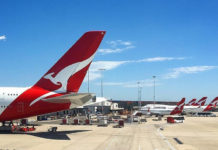

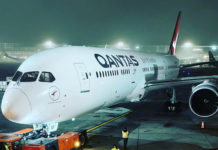
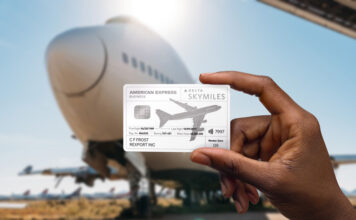

![The ideal 4 card American Express Membership Rewards team [Updated] a glass door with a picture of a man](https://travelingformiles.com/wp-content/uploads/2021/06/Amex-Centurion-Lounge-SFO-featured-741-356x220.jpg)
